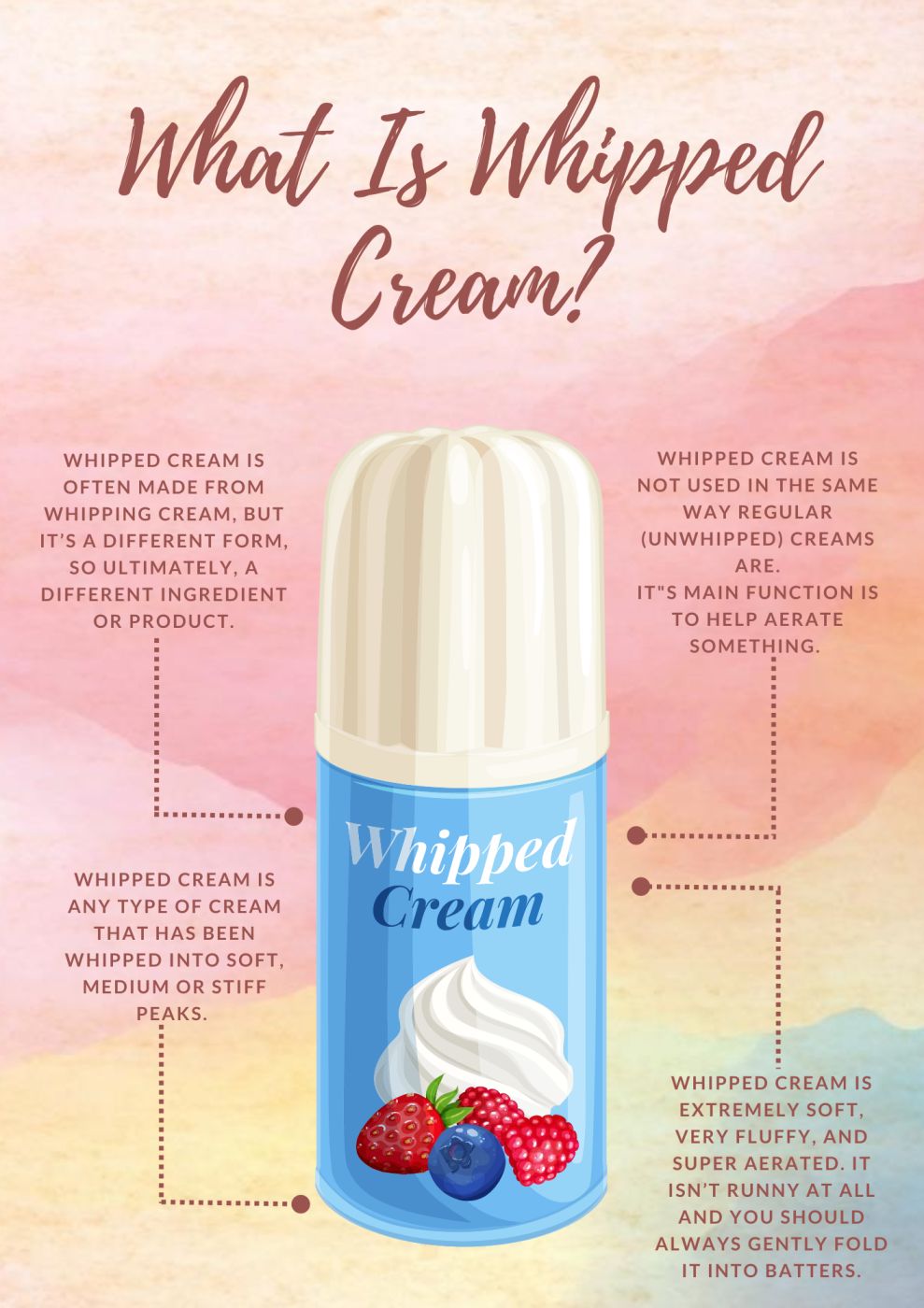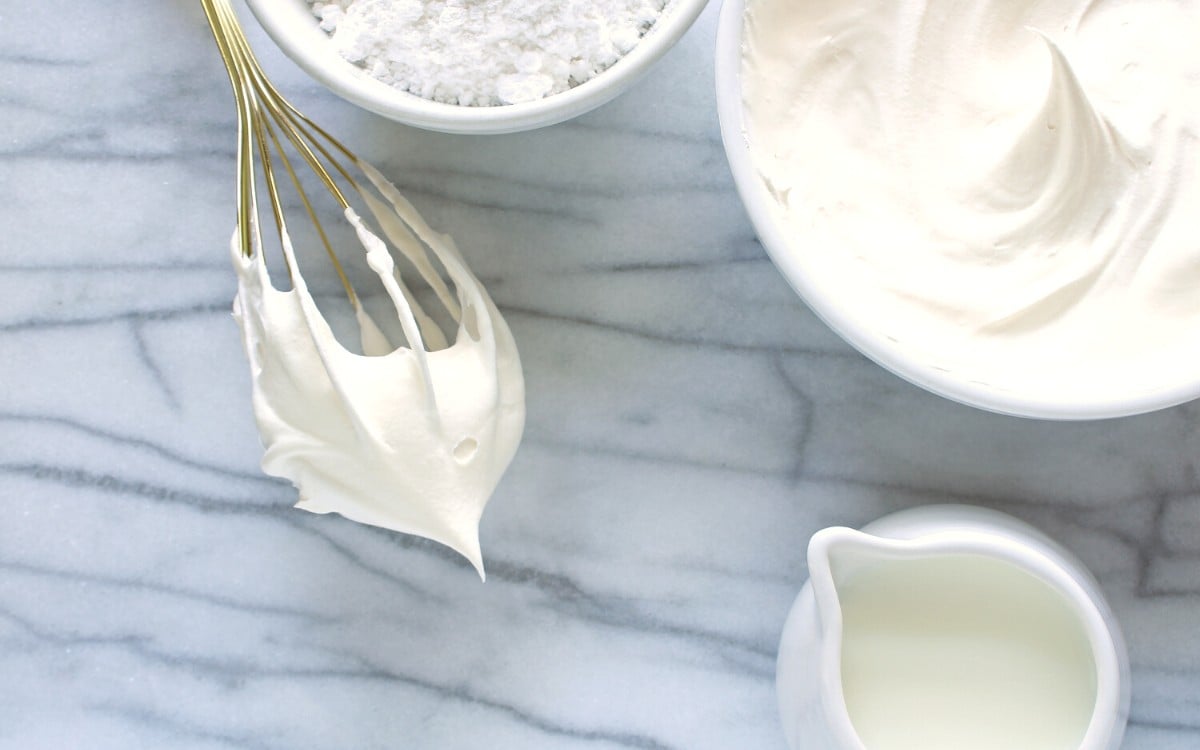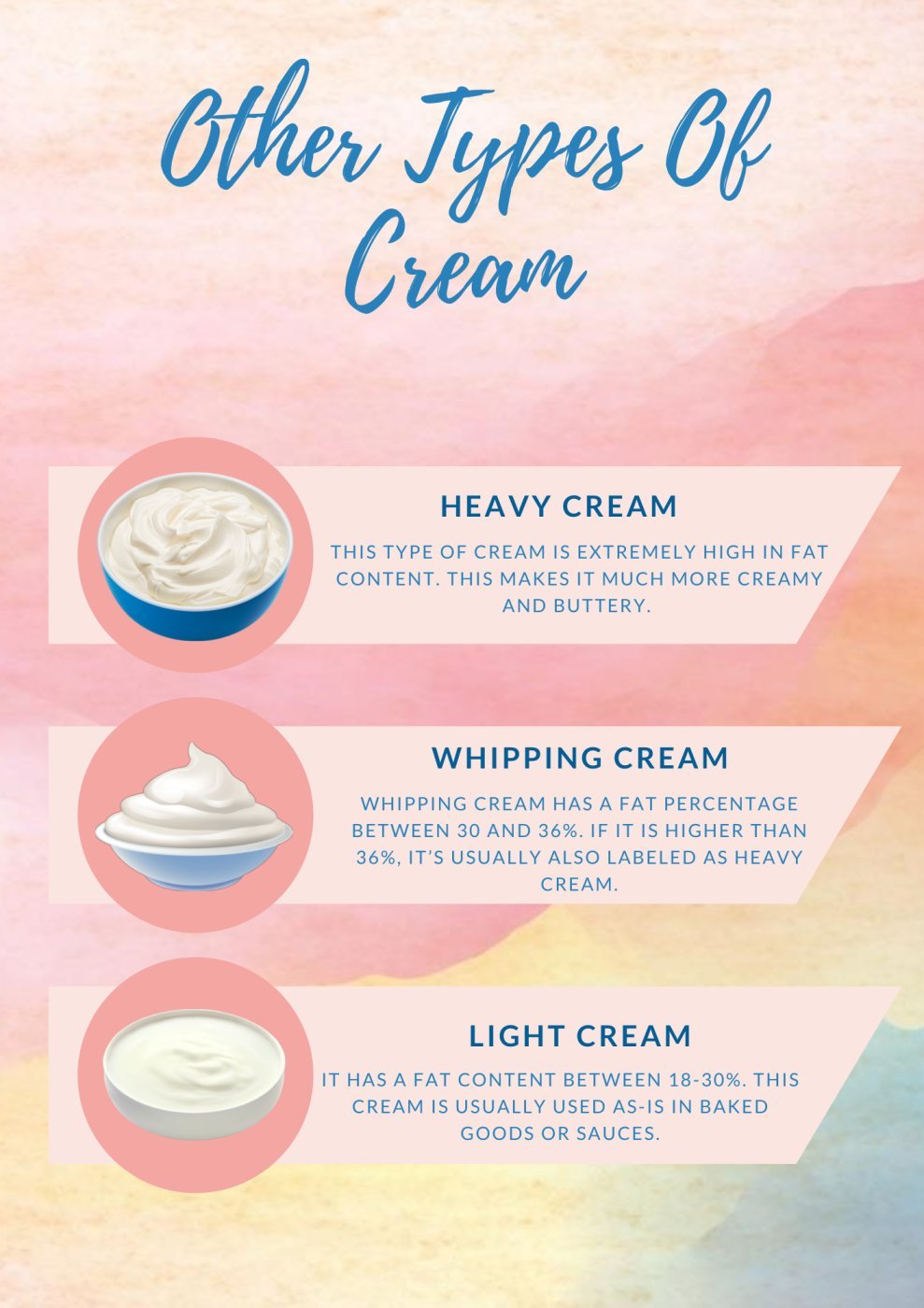The 5 Best Substitutes for Whipped Cream – Options That Work!
Today, we will look at the best substitutes for whipped cream – and they all work! Not only will I explain exactly what this product is (and how it differs from regular cream products), but we’ll also take a look at how to replace it in recipes and which options work best.
Then, if you are looking for ways to use these alternatives, you can check out my recipe for a Creamy Strawberry And Vanilla Milkshake or these Heart-Shaped Beignets.

What Is Whipped Cream?
There are a lot of confusing terms going around these days describing different kinds of creams. So before we look at the best whipped cream replacements, it’s important to understand what it is.

Whipped cream is often made from whipping cream, but it’s a different form, so ultimately, a different ingredient or product.
If you look at substitutes for “whipping cream,” the options will depend on the form the whipping cream ends up in. Because as you may know (or have experienced first-hand), not all creams can whip.
So, whipped cream is any type of cream that has been whipped into soft, medium or stiff peaks. Whipped cream is not used in the same way regular (unwhipped) creams are.
Whipped creams’ main function is to help aerate something. So, if you fold whipped cream into a cake batter, it’s meant to aerate the batter and create a softer, lighter, and fluffier cake texture.
If you added unwhipped cream, the cakes’ texture would be denser.
Whipped cream is extremely soft, very fluffy, and super aerated. It isn’t runny at all and you should always gently fold it into batters.
Other Types Of Cream
There are a shocking amount of cream products out there. And unfortunately, to make it even more complex, they are classified in different ways in different countries. We’ll take a look at cream classifications from the U.S.

Heavy Cream
This type of cream is extremely high in fat content. This makes it much more creamy and buttery. It also makes it much easier to whisk into whipped cream, which is why it’s the most popular option used to make whipped cream.
Heavy cream must legally have a fat content of at least 36%.
Whipping Cream
There are two types of whipping cream: those classified as heavy creams and those simply labeled as “whipping cream.”
The difference is that whipping cream has a fat percentage between 30 and 36%. If it is higher than 36%, it’s usually also labeled as heavy cream.
Both work as substitutes for each other to make whipped cream.
Light Cream
This cream can whip, but it’s extremely difficult to do so. Even more so to make a stable whipped cream product!
It has a fat content between 18-30%. This cream is usually used as-is in baked goods or sauces. It’s not intended to be used for whipping.
Best Whipped Cream Substitutes
Now that you understand exactly what whipped cream is (already whipped cream), it’s easy to find alternatives.
Anything that can be whipped or that is already whipped will work perfectly. However, this obviously depends on whether you make whipped cream at home or buy it from a can.
Today, we will only look at alternatives for heavy cream that can be used to make whipped cream. So, light cream, for example, won’t be on the list because it doesn’t whip.

1. Heavy Cream Or Whipping Cream
Now, obviously, if you usually use heavy cream, you can look for whipping cream instead, and vice versa. You don’t only have to use one or the other.
And the best part is that both work in exactly the same way and can be replaced with the same amounts.
Just please DO NOT use light cream or half and half as a substitute for whipped cream. It does not whip and won’t make a stable whipped product.

2. Coconut Cream
This is a fantastic dairy-free, vegan alternative for whipping cream or heavy cream. And obviously, it whips!
That being said, there is only one way you will get this plant-based cream to whip. You HAVE to chill the coconut cream overnight to ensure it’s super cold. Then, use a hand-mixer or stand-mixer to whip the liquid. You have to work quickly, or it will heat up too quickly.
If you want to make the whipped coconut cream sweeter, simply add some powdered sugar or a sweetener like Stevia.
Now, obviously, this alternative will have a different flavor. But luckily, coconut is a pretty easy flavor to pair with, and it should blend in seamlessly with the batter. You can also add other extracts to help subdue the coconut flavor.

3. Greek Yogurt
You can also use double-fat (double-thick) yogurt or full-fat yogurt as a substitute for whipped cream – anything that is super creamy and thick. And make sure it isn’t flavored or heavily sweetened.
Now, this alternative won’t work great for making heavily aerated batters and toppings. But it will add a ton of creaminess and is lighter than regular heavy cream.
There is a way to make whipped Greek yogurt. But it’s so much work that I prefer using it as-is.

4. Butter And Milk
An option that works, but not many people go for it as a whipped cream alternative.
You can combine 1/3 cup of softened butter with 3/4 cup of full-fat milk. Use an electric mixer to beat the ingredients together until you have the desired consistency.
This option is great for flavoring and doesn’t naturally change the flavor of your recipe, as coconut cream, and Greek yogurt does.

5. Evaporated Milk And Lemon Juice
This should be a last-resort option. You will see other blogs give MANY other strange combinations of ingredients, but this is the only one (I tested) that worked reasonably well. But again, the options above will work better as a whipping cream substitute or alternative to whipped cream.
To make this substitute, combine the chilled evaporated milk with 1 teaspoon of lemon juice. Use an electric mixer to mix it up. Make sure it whips well. The lemon juice will help stabilize the whipped mixture.

Substitute the cream for soups
If you’re looking for a substitute for cream in soups such as pumpkin or mushroom soup, there are several options you can try. Here are some suggestions:
Cashew cream: Soak some cashews in water for a few hours, then blend them with some water or broth until smooth to create a creamy and nutty cashew cream. This can be a great substitute for cream in your soups, especially if you’re looking for a vegan or dairy-free option.
Soy milk or almond milk: Soy milk or almond milk can be used as a substitute for cream in soups. Just be aware that they have a slightly thinner consistency than cream and may not add as much richness.



